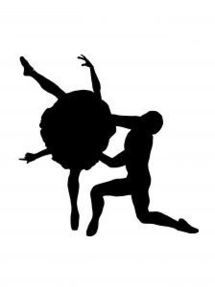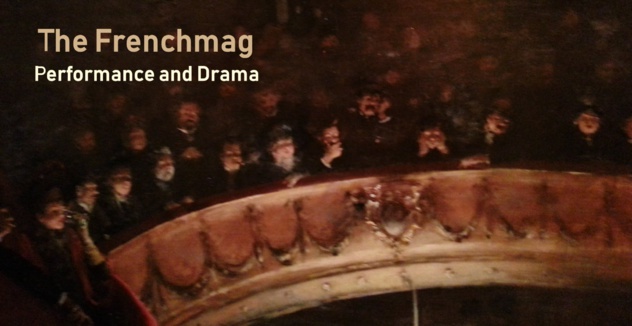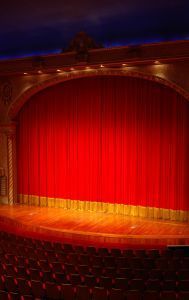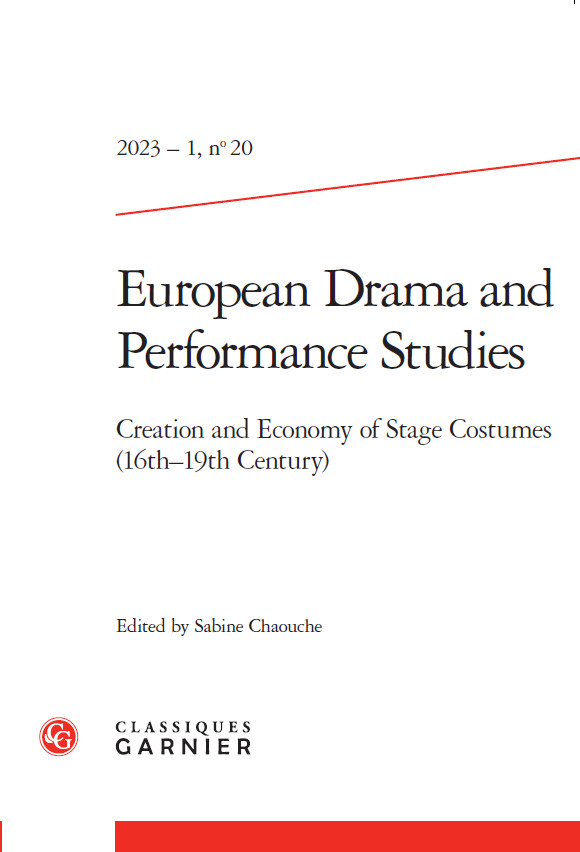
Whereas the last two symposia focused on the dramatic stylistic changes of the seventeenth and eighteenth centuries, this year we will investigate the variety of European dance culture – the manifold styles and dances of the individual countries and regions. We will consider their forms and unique features as well as questions concerning the social and political environment in which they evolved and interconnections with the art styles of the time.
Emphasis will also be placed on the “journeys” of these dance forms, their dissemination to other European countries and their colonies, their reception, further development and impact as “cultural ambassadors” or even as political statements. Finally, we will trace the travel routes of dancers and dance masters, consider their careers in different countries and investigate the influence of local dance styles on their own development and their impact on the local dance culture. Our topic encompasses all forms of dance, from social dance to stage dance, folk dance to courtly dance from the Early Renaissance to the end of the Napoleonic era.
Presentations may be made in either German or English.
- What is the history of the hornpipe?
- What impact did the French basse danse have on the Italian dance style of
the sixteenth century?
- How “German” was the “allemande”?
- How important were Italian dances in Germany of the fifteenth century?
- How successful were the Italian dance masters of the sixteenth century in
spreading their dance style in Europe?
- What dances were imported from the colonies?
- How did the European dance culture develop in the colonies?
- How was Polish dance viewed in Germany?
- Was this view influenced by the political situation?
- What changes did French eighteenth-century dance undergo in Spain?
- Can a nation’s “character” be reflected in its dance forms?
- What role does the exotic element play in sixteenth-century dance?
- Was the forlana “typically Italian”?
- Was there a German Baroque dance style?
- Did the volta have an impact on the social life of the court?
- What social role did dance have in various regions?
- Did regional dance styles have a place on the stage?
- Did the stage have an impact on these dances and dance styles?
- What factors played an important role in the “intercultural dance exchange”?
- Why were foreign dances popular?
- etc., etc., etc.
In addition to furthering the scholarly discussion, it is a particular goal of the symposium to present to interested dancers and dance enthusiasts the state of dance research today. The symposium will offer a wide range of activities from lectures, workshops, demonstrations, a book and music exhibition to evening dancing and a festive ball with live music.
Papers not yet presented on the topics listed above are welcome.
A publication of the contributions is planned and will be available at the
symposium.
Categories of Proposals
• Individual papers: Limited to 30 minutes, with approximately 10 additional
minutes for discussion. Papers may also include a short dance demonstration
(in which case the total time may be somewhat longer).
Honorarium: 210 euros
• Workshops: Limited to 90 minutes. The topic may be linked to a paper. In
order to keep the size of the workshop reasonable (20 – 40 participants) each workshop will be presented three times. Handouts and other instructional materials must be prepared in advance.
Honorarium: 210 euros
• Short performances: 15-30 minutes. May be linked to a paper.
This category is intended as an “open podium” for dance groups to make a presentation. Please submit a demonstration video along with the proposal.
• Evening dance class: 90-120 minutes.
A program of relatively simple, easily learned social dances from the 15th to the early 19th century. Each class will be offered twice, with half the conference participants attending each time. A live music group will be available for one of the classes; recordings must be used for the second class. The dances taught in these classes will serve as the basis for the final ball program.
Honorarium: 210 euros
Honoraria and expenses:
Presenters (with the exception of dance groups giving short performances) are exempt from the conference registration fee.
Expenses for lodging, meals, and travel that exceed the honoraria listed above are the responsibility of the presenter and cannot be reimbursed.
Conference languages:
Presentations may be made in either German or English.
Deadline for proposals: 1 June 2011
Submit a short summary (one page) of the proposal to Markus Lehner (see below) by mail, fax, or e-mail. The program committee will make its selection by 1 August 2011.
Program committee:
Prof. Carol G. Marsh (musicologist, author of Musical Theatre at the Court of Louis XIV)
Barbara Sparti (dance scholar, author of numerous publications concerning renaissance dance)
Jørgen Schou-Pedersen (music teacher, dance scholar and dance pedagogue)
Uwe Schlottermüller (musicologist, publisher of historical dance treatises: Instruction pour dancer; J.G. Pasch, Anleitung sich bei grossen Herrn Höfen und anderen beliebt zu machen, 1659)
Markus Lehner (author of A manual of sixteenth-century Italian dance steps)
Conference organizers:
Markus Lehner, Uwe Schlottermüller
For further information about the conference, please contact:
Markus Lehner,
Mühlfelder Str. 18b,
D-82211 Herrsching, Germany
Tel. 0049-(0)8152-5248, Fax. 08152-981509
Email: markus.lehner@online.de
Uwe Schlottermüller,
Schillerstr. 6,
D-79102 Freiburg, Germany
Tel. 0049-(0)761-72990
Email: fagisis@aol.com
Conference site:
For decades the Rothenfels castle has served as a conference center, welcoming in particular historical dance events; thus it is well known to many dancers and dance groups. The oldest part of the castle, dating from the 12th century, provides a lovely atmospheric framework for the conference. The castle is situated directly on the Main river between Würzburg and Frankfurt, 7 km north of Marktheidenfeld.
For questions about the conference site, please contact:
Verwaltung Burg Rothenfels, D-97851 Rothenfels, GERMANY
Tel. 0049-(0)9393-99999, Fax. 0049- (0) 9393-99995
Email: verwaltung@burg-rothenfels.de Web: www.burg-rothenfels.de
Emphasis will also be placed on the “journeys” of these dance forms, their dissemination to other European countries and their colonies, their reception, further development and impact as “cultural ambassadors” or even as political statements. Finally, we will trace the travel routes of dancers and dance masters, consider their careers in different countries and investigate the influence of local dance styles on their own development and their impact on the local dance culture. Our topic encompasses all forms of dance, from social dance to stage dance, folk dance to courtly dance from the Early Renaissance to the end of the Napoleonic era.
Presentations may be made in either German or English.
- What is the history of the hornpipe?
- What impact did the French basse danse have on the Italian dance style of
the sixteenth century?
- How “German” was the “allemande”?
- How important were Italian dances in Germany of the fifteenth century?
- How successful were the Italian dance masters of the sixteenth century in
spreading their dance style in Europe?
- What dances were imported from the colonies?
- How did the European dance culture develop in the colonies?
- How was Polish dance viewed in Germany?
- Was this view influenced by the political situation?
- What changes did French eighteenth-century dance undergo in Spain?
- Can a nation’s “character” be reflected in its dance forms?
- What role does the exotic element play in sixteenth-century dance?
- Was the forlana “typically Italian”?
- Was there a German Baroque dance style?
- Did the volta have an impact on the social life of the court?
- What social role did dance have in various regions?
- Did regional dance styles have a place on the stage?
- Did the stage have an impact on these dances and dance styles?
- What factors played an important role in the “intercultural dance exchange”?
- Why were foreign dances popular?
- etc., etc., etc.
In addition to furthering the scholarly discussion, it is a particular goal of the symposium to present to interested dancers and dance enthusiasts the state of dance research today. The symposium will offer a wide range of activities from lectures, workshops, demonstrations, a book and music exhibition to evening dancing and a festive ball with live music.
Papers not yet presented on the topics listed above are welcome.
A publication of the contributions is planned and will be available at the
symposium.
Categories of Proposals
• Individual papers: Limited to 30 minutes, with approximately 10 additional
minutes for discussion. Papers may also include a short dance demonstration
(in which case the total time may be somewhat longer).
Honorarium: 210 euros
• Workshops: Limited to 90 minutes. The topic may be linked to a paper. In
order to keep the size of the workshop reasonable (20 – 40 participants) each workshop will be presented three times. Handouts and other instructional materials must be prepared in advance.
Honorarium: 210 euros
• Short performances: 15-30 minutes. May be linked to a paper.
This category is intended as an “open podium” for dance groups to make a presentation. Please submit a demonstration video along with the proposal.
• Evening dance class: 90-120 minutes.
A program of relatively simple, easily learned social dances from the 15th to the early 19th century. Each class will be offered twice, with half the conference participants attending each time. A live music group will be available for one of the classes; recordings must be used for the second class. The dances taught in these classes will serve as the basis for the final ball program.
Honorarium: 210 euros
Honoraria and expenses:
Presenters (with the exception of dance groups giving short performances) are exempt from the conference registration fee.
Expenses for lodging, meals, and travel that exceed the honoraria listed above are the responsibility of the presenter and cannot be reimbursed.
Conference languages:
Presentations may be made in either German or English.
Deadline for proposals: 1 June 2011
Submit a short summary (one page) of the proposal to Markus Lehner (see below) by mail, fax, or e-mail. The program committee will make its selection by 1 August 2011.
Program committee:
Prof. Carol G. Marsh (musicologist, author of Musical Theatre at the Court of Louis XIV)
Barbara Sparti (dance scholar, author of numerous publications concerning renaissance dance)
Jørgen Schou-Pedersen (music teacher, dance scholar and dance pedagogue)
Uwe Schlottermüller (musicologist, publisher of historical dance treatises: Instruction pour dancer; J.G. Pasch, Anleitung sich bei grossen Herrn Höfen und anderen beliebt zu machen, 1659)
Markus Lehner (author of A manual of sixteenth-century Italian dance steps)
Conference organizers:
Markus Lehner, Uwe Schlottermüller
For further information about the conference, please contact:
Markus Lehner,
Mühlfelder Str. 18b,
D-82211 Herrsching, Germany
Tel. 0049-(0)8152-5248, Fax. 08152-981509
Email: markus.lehner@online.de
Uwe Schlottermüller,
Schillerstr. 6,
D-79102 Freiburg, Germany
Tel. 0049-(0)761-72990
Email: fagisis@aol.com
Conference site:
For decades the Rothenfels castle has served as a conference center, welcoming in particular historical dance events; thus it is well known to many dancers and dance groups. The oldest part of the castle, dating from the 12th century, provides a lovely atmospheric framework for the conference. The castle is situated directly on the Main river between Würzburg and Frankfurt, 7 km north of Marktheidenfeld.
For questions about the conference site, please contact:
Verwaltung Burg Rothenfels, D-97851 Rothenfels, GERMANY
Tel. 0049-(0)9393-99999, Fax. 0049- (0) 9393-99995
Email: verwaltung@burg-rothenfels.de Web: www.burg-rothenfels.de




